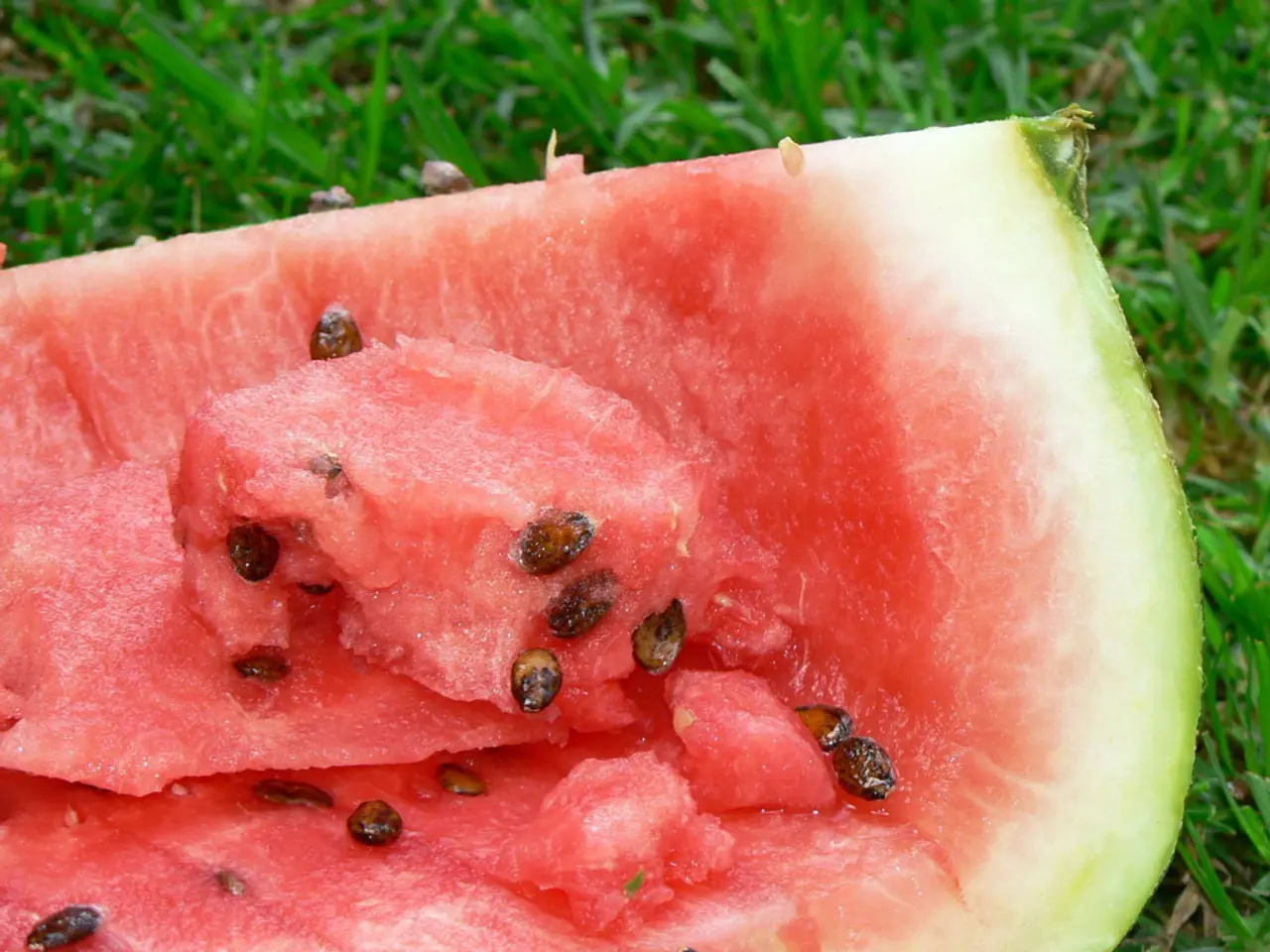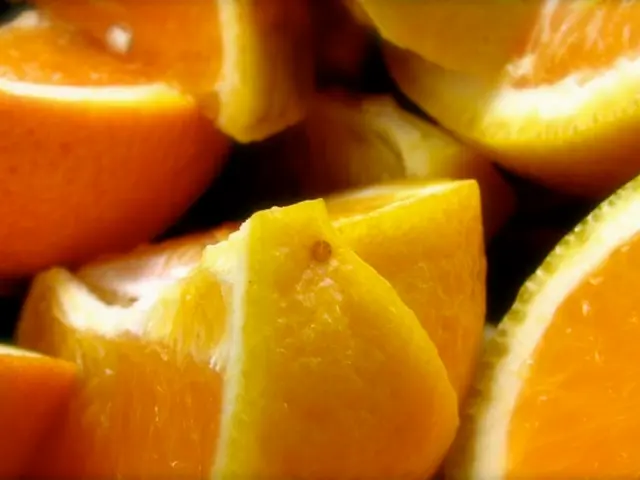Guide to Cultivating Delicious Watermelons Throughout the Summer Season
Growing watermelons can be a rewarding experience for home gardeners. These delicious fruits require specific care and conditions to thrive, but with the right knowledge, you can enjoy a bountiful harvest. Here's a detailed guide on how to grow and care for watermelon plants.
Light
Watermelons need full sun exposure, ideally 8 to 10 hours of direct sunlight daily, to mature fruit properly. They thrive best in sunny, warm locations.
Water
Watermelons require consistent moisture, especially during fruiting. Provide about 1 to 2 inches of water per week, focusing on deep watering at the base to reach roots effectively, while avoiding overhead watering to reduce fungal diseases like powdery mildew. Soil should be moist but not soggy.
Temperature
Watermelons prefer warm temperatures; they grow best when daytime temperatures range between 70°F to 85°F (21°C to 29°C). Frost or cold conditions strongly inhibit growth.
Humidity
Moderate humidity is ideal. Too much leaf moisture can promote fungal diseases, so watering practices that keep foliage dry help maintain plant health.
Soil
Watermelons grow best in well-draining, fertile soil rich in organic matter. A loose, sandy loam soil with good drainage is preferred, with a pH around 6.0 to 6.8.
Fertilizer
Use a balanced fertilizer to promote healthy growth. Apply after seedlings have true leaves, with a balanced NPK such as 10-10-10 recommended in similar cucurbits. Over-heavy nitrogen can encourage vines over fruit.
Problems, Pests, and Diseases
- Common pests: Aphids, squash bugs, cucumber beetles can damage plants and spread disease. Neem oil and insecticidal soap are effective organic treatments.
- Disease: Fungal infections like powdery mildew are common if moisture lingers on leaves, so avoid overhead watering and remove infected leaves promptly.
- Prevention: Crop rotation and use of row covers protect young plants from pests and disease buildup.
Planting
- Start seeds after frost risk passes and soil warms.
- Space vines adequately, as they spread widely; spacing depends on whether trellising is used or if allowed to sprawl.
- Hand pollination is rarely needed, but adequate pollinators like bees ensure fruit set.
Harvesting
- Watermelons are typically ready to harvest when the tendril closest to the fruit turns brown and dries, the rind loses gloss, and the bottom of the melon turns yellow.
- Harvesting at the right time ensures best sweetness.
Storing
- Store harvested watermelons in a cool place (50-60°F or 10-15°C).
- Whole melons last longer (1-2 weeks), sliced melons should be refrigerated and consumed within a few days.
Varieties
- There are many watermelon varieties ranging from small "icebox" types to large Crimson Sweet and seedless varieties. Selection depends on space, climate, and taste preferences.
- Mardi Gras, Royal Majesty, and AU-Producer are varieties that produce the biggest fruit.
- Sugar Baby, Yellow Baby, and Golden Crown are varieties for early harvest.
These combined care elements promote healthy watermelon growth, good fruit yield, and reduce common problems. The information is synthesized primarily from a recent detailed guide on growing watermelon in home gardens and relevant crop care practices.
[1] Homegrown.org [4] Cornell University Extension
Nurturing a home-and-garden lifestyle, gardening watermelons can be a delightful addition to your home-grown produce. To ensure a thriving garden, provide watermelons with 8 to 10 hours of full sun exposure, consistent moisture, and moderate humidity, and select fertile soil rich in organic matter for optimal growth. By keeping an eye out for common pests like aphids, squash bugs, and cucumber beetles, and taking steps to avoid fungal diseases like powdery mildew, you can enjoy a bountiful home-and-garden harvest of sweet watermelons.




